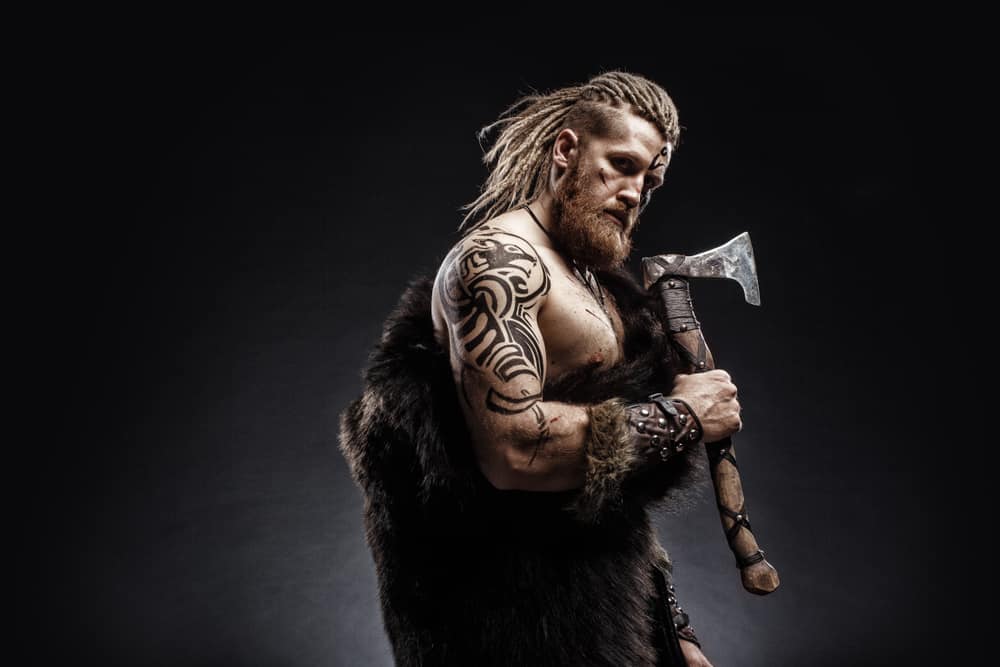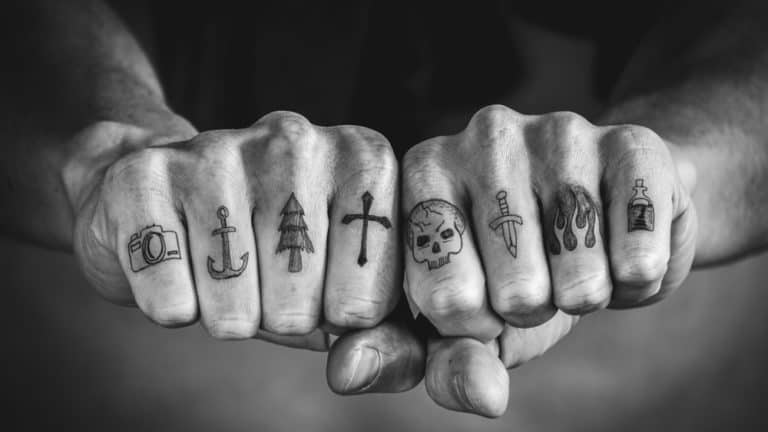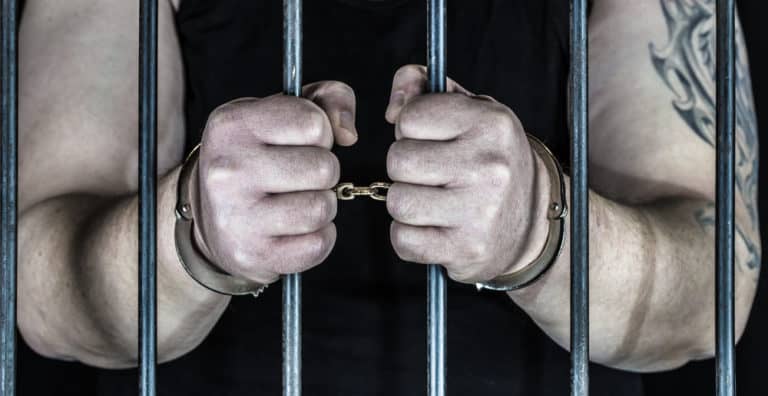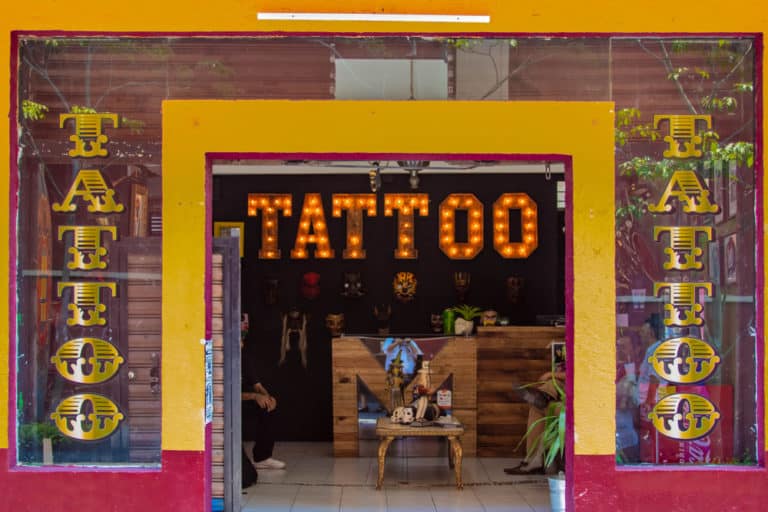What Did Vikings Use For Tattoo Ink?
If you have e ever watched the tv show Vikings, you may have seen the Norse en covered in tattoos and wearing black eye makeup. This was not just in the show, though; it is considered a fact that the Vikings (also called Norsemen) had a ton of tattoos. So, what did they use for ink?
While considered a fact, there is no concluding evidence of Vikings having tattoos except for one historical account of them being covered in ink. If Vikings did have tattoos, they likely used ash, charcoal, and other materials in nature for ink. Other ancient cultures also used soot and breastmilk.
This article examines how Vikings made their tattoo ink, the historic accounts of Vikings having tattoos, the symbols and designs they probably would have had, and the symbolism behind these tattoos.
How Did Vikings Make Their Tattoo Ink?
Ancient cultures primarily used charcoal, ash, and other natural materials to ink their bodies. The Vikings likely used wood ash to dye their skin and tattoo figures and symbols onto their bodies. This would have given their tattoos a dark blue hue.
The Vikings may have used bone chisels to carve their designs onto the skin. Using bone chisels has been traced back to 5000 b.C. The Maori people used a bone chisel as a needle to carve the design. They would then use a rake-like tool to hold the ink and a hammer to puncture the skin to get the desired design.
Other tattoos were made by mixing soot and breastmilk as ink. They would prick patterns into the skin using a needle or something sharp and then rub the ink into the open wound.
Literary Accounts Of Vikings Having Tattoos
One famous account of Vikings having tattoos is found in Ibn Fadlan’s travel chronicler. He described their bodies as perfect, as tall as palm trees. He goes on to describe that the Vikings did not wear tunics or kaftans; instead, they wore cloaks that covered half their bodies with one arm uncovered.
Fadlan mentions that the Norsemen were covered in tattoos from their necks to the tips of their fingers. However, the word “tattoo” may just have been used to describe the decorations and symbols on their bodies. The Arabic word for “tattoo” describes mosque decorations, not actual tattoos.
A Scythian chieftain found in Siberia buried under permafrost still had his skin and tattoos intact. He was buried around 500 b.C. This was before Norse traders came to that region (now Russia). However, it leads many to believe that the Vikings learned their tattooing art from the Scynthians’ descendants when trading with them in that area.
Unfortunately, there are no other accounts of the Norsemen being tattooed since they did not keep records of their history. So, much has been lost to history.
10 Tattoo Designs Vikings May Have Had
It is known that the Vikings used certain images and designs to carve into their weapons, so if they did have tattoos, they most likely would have had the Yggdrasil (a sacred tree of life), a Vegvesir (which looks like a compass), the Valknut to remember their dead, Thor’s hammer, Odin’s spear, runic symbols, a sun wheel, a triskelion, a wolf or the helm of awe. Let’s briefly look at what each symbolizes.
Yggdrasil
At one point, Fadlan describes the Norsemen as covered in tree designs. The Yggdrasil is a sacred tree in Norse cosmology. It is the tree of life and the center of the cosmos. The tree connects the Nine Worlds.
Compass Tattoo Aka Vegvisir
The term vegviser is Icelandic for “Wayfinder” or “signpost .”The symbol would have been carried close to them or tattooed to remind them that they would find their way home safely.
Valknut
The Valknut, also known as Odin’s Knot in Norse mythology, symbolizes the transition between life and death. It was also used to remember those who fell in battle to honor them.
Mjolnir (Thor’s Hammer)
Thor’s hammer, Mjolnir, is a magical weapon that always returned to his hand. Thor is often depicted using the hammer to defend Asgard from enemies. It symbolizes protection, fertility, growth, and good fortune.
Odin’s Spear
Odin’s spear, Gungnir, is a weapon of the Gods in Norse religion and was believed to be made by dwarves. The spear has many runic symbols, believed to empower it to increase its accuracy when attacking an enemy.
Runes
Runic symbols were often carved into the Vikings’ weapons and are an ancient form of writing. Runes are believed to have mystical powers. There are several variations, each with its own meaning. They are sigils that connect with the subconscious mind of those who see them.
The Sun Wheel
The Sun Wheel is a swastika and is very controversial and offensive today due to its association with the Nazi Party. But before this time, the swastika had its roots in several ancient civilizations like the Old Norse and was associated with Thor.
In Norse religion, the sun wheel image brings power, prosperity, and luck. It also symbolizes fertility, health, a celebration of life, and a good harvest.
Triskelion
In Norse religion, the triskelion is an image of Odin’s horns, namely three interlocking horns. It symbolizes inspiration, Odin himself, and wisdom.
The Helm Of Awe
The Helm of Awe also known as the Aegishjalmur, symbolizes protection and power. It was believed that those who look at the image would be frozen in terror and then easily be defeated.
Wolf
The wolf is associated with Odin and is a symbol of protection.
Conclusion
While there is no concrete evidence of the Vikings having tattoos, we know that ancient cultures created tattoos using natural materials. The Vikings would have used charcoal, ash, and other natural materials to make their ink. Because of their Norse religion, many tattoos would probably have referenced the Gods they believed in and symbolized power, protection, life, and fertility.
Some of my favorite designs, tattoo books, and aftercare products, selected for you
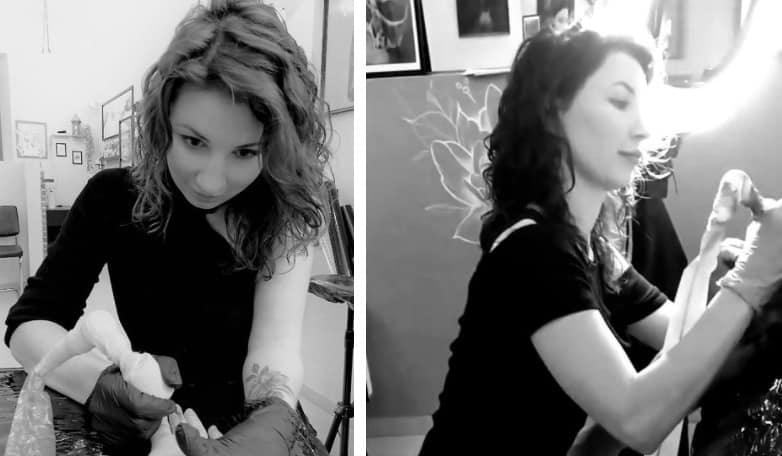
Thank you for reading my article, I hope that you have found it helpful. If you would have trouble finding ideas for your tattoo, wonder what is meaning of design that you have found or what to buy for aftercare, to make sure that your tattoo will be healing quickly and easily, here are some of my favorite products in one place, hope that this will also help.
Design and tattoo ideas
For some ideas you can have a look at those 3 books with hundreds of designs that I use with my clients, they are available on Amazon for Kindle or in classic, paper version (links below):
- Great Book of Tattoo Designs, Revised Edition: More than 500 Body Art Designs (Fox Chapel Publishing) Fantasy, Celtic, Floral, Wildlife, and Symbol Designs for the Skin by Lora Irish
- The Big Book of Small Tattoos – Vol.1: 400 small original tattoos for women and men by Roberto Gemori
- Tiny Tattoos: Over 1,000 Small Inspirational Artworks by Rebecca Vincent.
Tattoo meaning
If you would like to read more about the meaning of different tattoo styles and designs before you will decide what you would like to have, I can recommend a book that was really useful for me when I was starting my tattoo adventure – it’s “Conscious Ink: The Hidden Meaning of Tattoos” by Lisa Barretta (through the link you can find it on Amazon for around $10).
Tattoo aftercare
The skin at the tattoo site often dries out. To prevent it and speed up healing for my clients, I usually recommend one of those tattoo aftercare balms (you can find them on Amazon):

